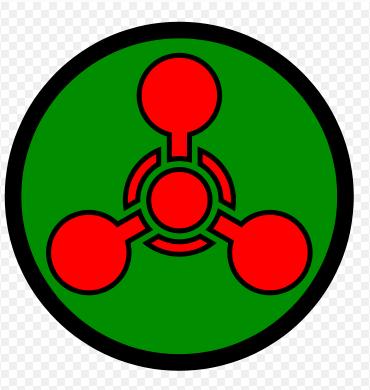A researcher at the University of Texas is developing an enzyme that can neutralize one type of deadly chemical - the organophosphorus

The American war against terrorism includes within it the fight against the dark side of deadly chemical substances, and at the University of Texas in the USA, chemist Dr. Frank Raushel joined this fight by developing an enzyme that could neutralize one type of such deadly chemical substance, the organophosphates.
Synthetic organophosphates started out as insecticides in the 1930s but soon entered the dark alleys of chemical warfare weapons during World War II. The researcher, who worked on neutralizing these substances for about ten years, claims that their toxic properties pose a real threat to the health of the general public.
Despite being outlawed by several arms control treaties, several countries have already used it during their wars. In 1988, the Kurdish village of Halabja in Iraq was exposed to a combination of chemical warfare agents and as a result about five thousand of its fifty thousand inhabitants were killed. After the incident, traces of mustard gas and organophosphorus substances were discovered which included Sarin, Tabone and VX.
According to Wikipedia, the sarin gas (chemical name: O-isopropyl methylphosphonofluoride) is a nerve gas based on organic phosphorus, which was first synthesized in 1938 in Germany. The gas is odorless and has a light brown color in its liquid form, it evaporates easily at room temperature and has a short "shelf life" of a few weeks to months. The effect of sarin gas on the nervous system is fatal - the gas penetrates through the respiratory system and even through the skin, and like most nerve gases damages the nervous system of its victims. It suppresses the enzyme cholinesterase, so that the breakdown of the neurotransmitter acetylcholine is inhibited and the ability of the nervous system to control the muscles is impaired. First symptoms of exposure to sarin are a runny nose, contraction of the chest muscles and dilated pupils. This is followed by difficulty breathing, nausea and increased salivation. Finally, the victim loses control of the sphincters and skeletal muscles, resulting in convulsions and death by suffocation.
Exposure to 0.01 milligrams of sarin per kilogram of body weight is enough to cause death within a minute. Its strength, according to estimates, is 500 times that of cyanide gas. Immediate injection of atropine or other substances that act as competitive inhibitors of the cholinesterase enzyme but do not damage it, is an effective remedy. Sarin gas made headlines after the Japanese Aum Shinrikyo sect spread it on the Tokyo subway in 1995, and after Iraqi missiles containing it were found in the Gulf War. On May 11, 2004, a small amount of sarin was used in a deadly attack by a group of terrorists against American soldiers in Iraq.
Although no one was injured as a direct result of the chemical, two of the soldiers were treated accordingly for fear of exposure; The VX gas is a nerve gas based on organic phosphorus that is similar in its way of working to sarin. Unlike sarin, it is not volatile but rather durable. The gas was first synthesized in 1952. It is odorless and colorless, and can only be detected using suitable technological equipment. It is considered the deadliest nerve gas in the world. VX gas is used as a chemical warfare agent, but can be treated with atropine injections. The only countries that have the technological knowledge to produce the material are Israel, the United States, England, Russia, France, Syria, and possibly even Iraq. After Saddam Hussein's son-in-law Hussein Kamal defected from Iraq, Iraq admitted that it possessed 4 tons of this type of gas. [From Wikipedia].
The organic phosphors are neurotoxins - they attack the nervous system by neutralizing the activity of the enzyme acetylcholinesterase, which carries nerve signals in the body. When organs, such as the lungs, do not receive the appropriate nerve signals, the control of the muscular and respiratory system is neutralized to the point of death by suffocation. Today, some types of such substances are used as pesticides and others are classified as chemical warfare agents.
Researchers have discovered an enzyme of bacterial origin called phosphotriesterase, which is able to detect and neutralize the toxicity of a variety of organic phosphorous substances used as nerve gases.
The researcher's goal is to design and characterize bacterial enzymes that will be better at identifying, neutralizing and eliminating the substances that pose the greatest danger to public health.
To the announcement of the researchers from the University of Texas

3 תגובות
Quite wonderful recommend to my grandchildren
Yes, but 98% of this text sounds like a copy paste from Wikipedia about WMD and only at the end 4 sentences related to the findings of the researchers from Texas.
The Gentiles didn't really give details
Finally an article by Dr. Nachmani edited in a readable language